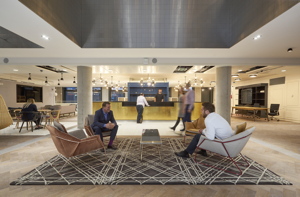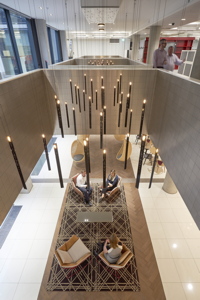The key to effective controls integration

The integration of multiple controls systems should be driven by the needs of a building’s occupants and the potential business benefits — believes Mark Vincent of Prolojik.
Integration has been a buzzword in building controls for a long time. In newer buildings multiple control systems are often integrated from the outset. But we should be asking ourselves if this is always necessary and what route we should be taking.
In our view, the answer should derive from information gathered about the needs of the occupants in any given building and the potential business benefits of any proposed solution. The answer shouldn’t be set in stone before we know who will be occupying the space or what their behaviours might be.
In many cases this ends up feeling like a ‘chicken and egg’ scenario, but Prolojik firmly believes that we can’t supply the best solution until we have identified the human need that is driving our work. It can be tempting to reach for the outer limits of the technology’s capability, but identifying the needs of the occupants and working back is the best way to ensure the technology serves, rather than manages, the people.
With this in mind, we work with clients to gather data that informs decisions about integration, designing and supplying flexible, open-protocol lighting-control systems that can be adapted and integrated in different ways once the building is occupied and the data analysed.
We supply to Cat A and Cat B projects, and whilst we may know a bit about the specific requirements of a CAT B building’s end users we would still recommend undertaking data analysis before any major decisions are taken. Data-driven decisions are more likely to be the right ones for the occupants and significantly reduce the potential for future headaches.
 |
| Meeting the needs of people is almost inevitably lined with energy-saving benefits — as demonstrated by this major office building in London. |
This doesn’t mean you can’t specify products until you have the data — but specify open-protocol systems that function to a high standard in the first place, that are flexible enough to be adapted, expanded, and/or integrated once you know what’s actually needed. We prefer to take a collaborative approach from the start, supplying the infrastructure via our lighting-control system and working with the building-management team and specialist partners in other control areas. As a collective, we are able to use the data we’ve gathered to assess how best to integrate all the elements.
A good example of this people-first approach is our work with a particular client for which we used our Proxima BLE (Bluetooth low energy) technology to track people’s movements. We set up wireless communication between the lighting system and individual security passes that were classified by job title. This protects the privacy of individuals but allows us to understand broadly the movements of the directors, management and support staff. The data gathered from the passes moving around the premises is available to the client via an API (application program interface) and has allowed them to identify where tangible business and colleague wellbeing benefits could be delivered and, crucially, to adapt the control systems accordingly.
From the data we are able to work out where people prefer to meet, and how they prefer to manage that meeting space. This makes it logical to integrate room-booking systems with lighting controls, HVAC, audio-visual and other control systems to reflect employees’ natural preferences.
Knowing who is using the space gives us the opportunity to create a user experience. For instance, when a VIP is approaching the lift lobby, a lift car is called and held for them. We can identify unused spaces that can be made more appealing or repurposed. The possibilities are virtually limitless.
 |
| Meeting the needs of people |
This type of integration is not only about creating environments that are tailored to the needs of the occupants with maximum automation but which will also deliver energy-saving benefits almost inevitably, if done well. Our example is a major office building, but the same principle can be applied across the healthcare, education, public, scientific and transportation sectors — to name a few.
Starting with the needs of the people and business rather than the scope of the available technology means that integration of control systems is an ever-evolving concept in the lifespan of a building. And this is a positive thing.
The surroundings can continue to adapt to occupants’ needs over time, rather than forcing the occupants to adapt to the building’s conditions. Beginning with an in-depth understanding of what’s needed, gleaned from detailed data capture, is the only way we can make sure these business-critical control systems can deliver the optimum environment and deliver maximum benefits to a business’s bottom line.
Mark Vincent is commercial director with Prolojik.








